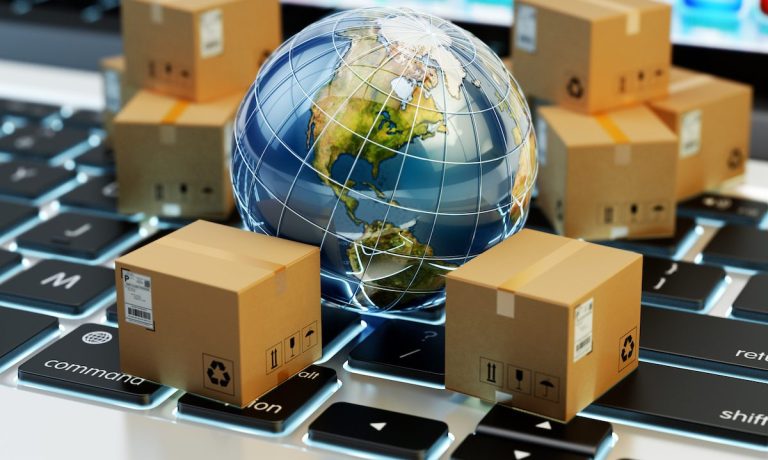
Innovative B2B payment methods and automated enterprise systems are mission-critical for companies expanding abroad.
As a result, companies around the world are turning to multicurrency tools, targeted strategies, and future-fit accounts payable (AP) and accounts receivable (AR) solutions to help accelerate and streamline their international growth.
But according to the new PYMNTS and Payoneer report, “International B2B Payments: A Guide for Entrepreneurs and Digital Businesses,” less than a quarter (23%) of small businesses are happy with their cross-border payment solutions.
Navigating International Waters
While the world has come a long way from when making a cross-border payment meant physically heading to a bank, filling out paperwork, and sending a wire transfer, expanding internationally still requires more than simply conducting business as usual with the passive help of technology.
There are many attractive countries to do business in where vendors, distributors and other third-party partners remain underserved by traditional banking or do not have access to the emergent digital platforms leveraged by hyper-modern economies.
For example, last summer’s “B2B Cross-Border Payments Tracker” a PYMNTS and American Express collaboration, showed how navigating cross-border payment complexity is a leading limitation to growth for 27% of small- to medium-sized businesses (SMBs), particularly as the number of payment methods merchants in different countries accept can vary wildly.
Erratic payments and cross-border B2B frictions are a key barrier to growth for SMBs, making it harder to accurately estimate future cash flows and creating potentially critical planning bottlenecks for businesses operating under slim margins.
Over 10% of U.S. SMBs are concerned about their survival prospects over the next few years, putting the onus on cash flow management to help them stay afloat.
Additionally, more traditional pain points like inconsistent cross-border transaction settlement times, supply chain complexities around inventory transparency and foreign currency market volatility, fragmented cross-border payment infrastructure, as well as bespoke regulatory compliance needs all remain front of mind for businesses hoping to pursue international opportunities.
The present environment makes B2B cross-border transactions comparatively opaque, slow and reliant on entrenched, manual processes. But it does not mean that growing internationally by leveraging cross-border B2B operations is an insurmountable obstacle or far-away aspiration for smart businesses that take advantage of the right tools.
Automating Success
Modernization of global B2B commerce is taking cues from the consumer marketplace, embracing digital and automated solutions to streamline and consolidate processes, as well as working toward a standard of real-time operational visibility for business leaders.
Even outside of the eCommerce landscape, international business is finding easy wins with digital technology, helping build a more robust cross-border network that replaces legacy payment rails with modern, efficient connections.
Tools that support the automation of payments workflows, including billing, currency selection and payment reconciliation are helping businesses scale while keeping their internal working finances and operations healthy.
All-in-one platforms, technology and financial assistance from banks and other payment providers hold great promise for smoothing B2B payment processes. Leveraging user-friendly integration solutions is proving to help simplify the digitization of legacy cross-border B2B transaction processes, with nine out of 10 SMBs saying they save more time and offer greater convenience.
To succeed in scaling internationally, businesses also need efficient, secure cross-border payments systems that are able to meet the requirements of new regulations and business customs and allow them to pay their vendors and manufacturers quickly, consistently and proficiently.
Simplifying the compliance burden is just one way that automated solutions are helping businesses minimize the administrative back-office lift that global B2B transactions generally entail.
Efficiency should not preclude compliance. If a business is unable to manage transaction-per-transaction compliance monitoring on its own, it is essential that its chosen banking solution holds the technical, and even human, resources to do so at a global scale. Rapid B2B client authentication and compliance screening is critical to establishing a sustainable, long-term international footprint.
Clearing banks can help chief financial officers and treasurers ensure their businesses are operating within a system that tracks and monitors all transaction data for noncompliance risks, as well as ensure that compliance-insights are able to inform and drive cross-border B2B payments strategies.
Looking Forward
Once an organization assesses its technical needs, it can choose to respond by devoting resources to developing these solutions in-house or partnering with a third-party solution or global bank that offers those integrated services. A survey of CFOs showed near unanimous support for prioritizing payments digitization in order to meet future challenges.
Payments management can be complex for businesses looking to grow internationally, but as the adoption of future-fit solutions reaches critical velocity, going global is becoming more streamlined and efficient than previous businesses may have ever thought possible.
For all PYMNTS B2B coverage, subscribe to the daily B2B Newsletter.